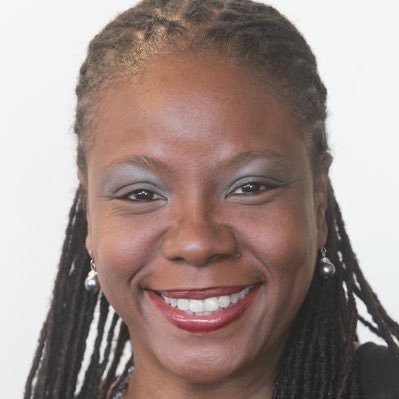There can be “no middle ground” when it comes to achieving equity in higher education.
That’s according to the latest report from Complete College America (CCA), a national advocacy group focused on closing racial, social, and economic institutional performance gaps and increasing college completion rates.
 Dr. Yolanda Watson Spiva, president of Complete College America.
Dr. Yolanda Watson Spiva, president of Complete College America.
No Middle Ground: Advancing Equity Through Practice is not just a call to action. It also functions like a toolkit, offering advice to assess if an institution is actually serving the needs of its minoritized students and helping those with less achieve the same goals as their more privileged or resourced peers. The report offers guidance around language, understanding of equity, and actions institutions can take to address inequity, each fitted into four “pillars:” purpose, structure, momentum, and support.
These four pillars, said Spiva, “encapsulate the full student experience about applying and seeking information, through completion and applying for career.”
Addressing a student’s purpose means that students who come to college should do so because they want to, and institutions should help them create plans for their educational journey. Structure refers to guard rails the institution has in place to help students continue without encountering significant barriers. Momentum means removing noncredit bearing courses (like remedial math or English), providing corequisite education options, and acknowledging skills a student might already bring to the table from outside of academia. Support reminds institutional leaders that 60% of college students face a basic needs insecurity, and wraparound safety-nets like a food pantry or housing help can help keep those students on track to success.
 Dr. Travis C. Smith, clinical assistant professor and program coordinator of student personnel in higher education at the University of Florida.
Dr. Travis C. Smith, clinical assistant professor and program coordinator of student personnel in higher education at the University of Florida.
“The well-intended get stuck in good intentions because they don’t want to do the wrong thing. We hope this publication arms them with confidence, to move out of the inertia and into the space of action,” said Spiva. “There’s no more time to stand in the murky middle with no real opinion about this. Inequity isn’t just the problem or responsibility of the under-resourced, it’s everyone’s responsibility.”
Assessing an institution’s progress towards greater equity requires a thorough disaggregation of data and intentionally listening to students’ needs and concerns. But many institutions still do not disaggregate their data by race, gender, or other mitigating factors, like whether or not a student is a caregiver or is employed.
Dr. Travis C. Smith, a clinical assistant professor and program coordinator of student personnel in higher education at the University of Florida, said that unless federal, state, or accreditation agencies require disaggregation, many institutions won’t take those steps toward greater accountability.
“Until we disaggregate data and start having those conversations by race and gender and citizenship, it’s kind of like smoke and mirror. Some schools win, and some schools suffer,” said Smith, in reference to the data measurements that are required, like retention, completion, and dropout rates. “We paint a false narrative around schools, but they aren’t all serving the same student. A student that works a full-time job—that story isn’t told, it just impacts the dropout rate.”
Institutions may be driven to avoid disaggregation, said Spiva, because the data may be used in a negative way for evaluating faculty, “as opposed to continuous learning and feedback.”
“It’s high stakes to peel back the onion and see what’s underneath,” said Spiva. “If we can shift this mindset, from punitive to learning—how do we situate the disaggregation of data in the larger scheme of continuous improvement?”
The report also contains language recommendations, suggesting under-resourced as opposed to low-income.
“There’s a system that hasn’t given them the resources,” said Spiva. “Language is powerful. There’ve been so many words that utilize deficit-based language, and we wanted to put the onus back on structural and institutional forces that have contributed to students not completing college.”
Dr. Kaleb L. Briscoe, an assistant professor in the department of educational leadership at Mississippi State University, noted that the report urges institutions to go beyond “equity 101,” meaning their equity efforts are based in limited individual programs offered to particular students.
“Equity 201 is knocking down and challenging structure. To challenge structure, we need funding and resources, ensuring staff get proper training to do these soles,” said Briscoe. “What are the ways you’re empowering equity and how are you empowering others? Do upper-level administrators even understand what equity looks like?”
Dr. Royel M. Johnson, an associate professor of higher education at the University of Southern California, said that this report was a “clarion call to action,” making it “clear that colleges and universities have an institutional responsibility to root out racism in their policies, practices, and services.”
“The authors do not mince their words,” said Johnson. “If you are not working to advance equity on your campus, then you are a part of the problem.”
Liann Herder can be reached at [email protected].
















